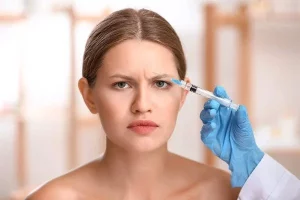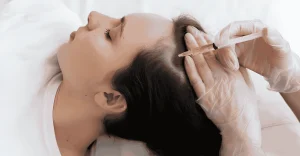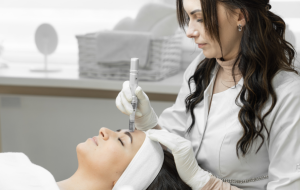Botox has become synonymous with wrinkle reduction and facial rejuvenation. While most people are familiar with its use for cosmetic purposes, Botox has a rich and evolving history that spans multiple medical fields.
From its humble beginnings as a treatment for medical conditions to its rise as a household name for combating facial wrinkles, Botox has undergone significant changes over the years.
This blog will explore Botox’s evolution from a medical marvel to a popular cosmetic treatment and how advances in technology and technique have made it more effective and accessible.
For those considering Botox Toronto options, understanding its evolution can provide insight into how botulinum toxin injections have become one of the most sought-after treatments for wrinkles and other conditions.
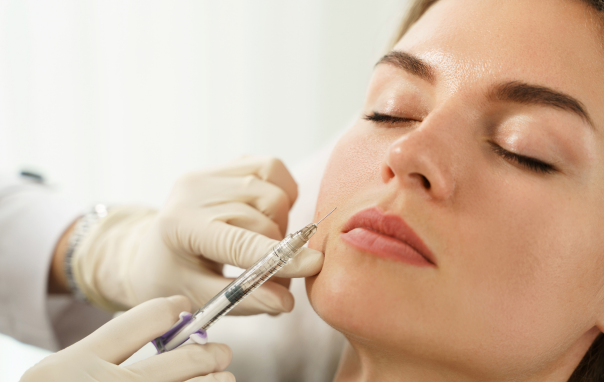
Early Discoveries: The Origins of Botulinum Toxin Injection
The journey of Botox begins with the discovery of botulinum toxin, a protein produced by the bacterium Clostridium botulinum.
Though this toxin is best known for causing food poisoning, scientists realized early on that its effects could be harnessed in controlled doses to treat various medical conditions.
The Toxic Discovery
In the early 19th century, botulinum toxins were identified as the cause of a life-threatening condition known as botulism, which often resulted from improperly preserved food.
Researchers discovered that the same botulinum toxin injection that caused botulism could, in very small doses, block nerve endings and muscle contraction. This discovery eventually led to the development of botulinum toxin injections, which would later become known as Botox.
By the 1980s, botulinum toxin type A had been purified and approved for medical use. The Food and Drug Administration (FDA) initially approved Botox for the treatment of cervical dystonia, a condition that causes painful neck spasms and muscle weakness.
However, as research progressed, scientists realized that Botox had applications far beyond treating neck conditions.
Botox’s Entry into Medicine
Before Botox became a popular cosmetic treatment, its primary use was treating medical conditions. Plastic surgeons and other healthcare providers began using botulinum toxin injections to address issues like chronic migraine, excessive sweating, and even overactive bladder. These early medical applications laid the foundation for Botox’s cosmetic uses.
Treating Medical Conditions
Some of the early approved medical applications for Botox include:
Cervical dystonia:
Botox helped relieve the affected muscles in the neck, reducing spasms and pain.
Upper limb spasticity:
Used to treat muscle stiffness and muscle weakness.
Excessive sweating (hyperhidrosis):
Botox effectively reduces sweat production when injected into the sweat glands.
Chronic migraines:
Regular Botox injections were shown to reduce the frequency and severity adverse effects of migraines.
Urinary incontinence and overactive bladder:
Botox helped relax the bladder muscles, reducing incontinence symptoms.
How Botox Works on Muscles
Botox works by targeting the communication between nerve endings and muscles. The toxin prevents the release of acetylcholine, a neurotransmitter that is responsible for muscle contraction, when it is administered to specific muscles.
This results in the relaxation of the injected muscles, allowing the overlying skin to smooth out. This same principle applies whether Botox is used for cosmetic purposes or to treat medical conditions.
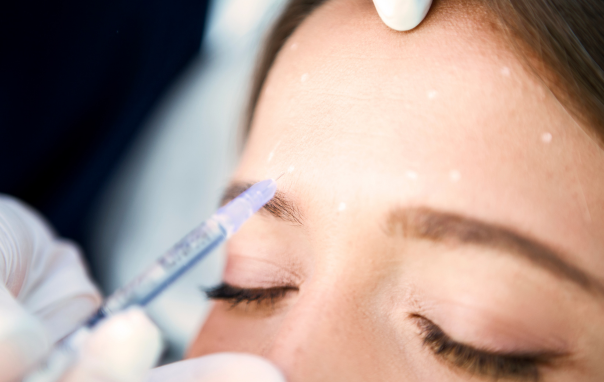
Botox Injection as a Cosmetic Treatment
Botox’s transition from a medical treatment to a cosmetic treatment was serendipitous. In the late 1980s, doctors noticed that patients receiving Botox for neck spasms and other conditions showed reduced facial wrinkles as a side effect.
Recognizing its potential as a wrinkle treatment, researchers began to explore Botox’s use for cosmetic purposes.
FDA Approval for Cosmetic Use
In 2002, the FDA approved Botox for treating frown lines (glabellar lines) between the eyebrows. Since then, Botox has been approved for additional cosmetic uses, including crow’s feet, forehead wrinkles, and bunny lines on the nose. The ability to smooth out these wrinkles made Botox a household name and one of the world’s most popular non-surgical cosmetic treatments.
Botulinum Toxin Injections for Wrinkle Reduction
Botox treatments for wrinkles temporarily reduce muscle activity in the facial muscles responsible for forming wrinkles.
By preventing the muscle contraction that creates frown lines, forehead wrinkles, and crow’s feet, Botox helps patients achieve a smoother, more youthful appearance.
When injecting Botox, a qualified professional carefully targets the injection sites to ensure natural-looking results. The goal is to relax the muscles responsible for causing wrinkles without affecting overall facial expressions.
Botox is often paired with other treatments, such as hyaluronic acid fillers, to provide comprehensive facial rejuvenation.
Advances in Botox Techniques
Over the years, the techniques used for administering Botox have significantly improved. Early Botox treatments were more generalized, with doctors applying the same injection patterns for all patients.
However, facial anatomy and injection site mapping advancements have allowed for more precise and individualized treatments.
Tailored Treatment Plans
Today, Botox treatments are highly customizable. Professionals consider each patient’s medical history, skin type, and desired outcomes to create a tailored treatment plan.
This level of precision allows for natural results and minimizes the risk of side effects such as droopy eyelids, blurred vision, or bruising at the injection site.
Modern Botox treatments often inject vibration anesthesia or topical numbing cream to reduce discomfort during the procedure. This helps make the treatment virtually painless, addressing concerns like “Does Botox hurt?”.
Addressing New Areas
In addition to facial wrinkles, Botox is now used to address other cosmetic concerns, including:
- Sagging skin: Botox can help lift and tighten areas prone to sagging.
- Bunny lines: These fine lines on the nose’s sides can be smoothed with Botox.
- Lip lifts: Botox can be combined with lip filler to create a fuller, more defined upper lip.
- Masseter Botox is used to slim the jawline by relaxing the masseter muscles, which are responsible for a square or broad jaw appearance.

Medical and Cosmetic Safety of Botox
Over the years, Botox has established a strong safety record for both medical and cosmetic use. However, as with any treatment involving injections, patients should be aware of potential risks and possible side effects.
Common Side Effects
Some common side effects of Botox include:
- Bruising at the injection site is temporary and usually resolves within a few days.
- Headache: Some patients may experience mild headaches after treatment.
- Flu-like symptoms: Temporary flu-like symptoms may occur following a Botox session.
- Muscle weakness: In rare cases, patients may experience temporary muscle weakness in nearby areas.
Serious Side Effects
While Botox is generally safe, serious side effects such as difficulty breathing, trouble swallowing, and severe allergic reactions are rare but possible.
Patients should always choose a qualified professional to administer their Botox to avoid complications and ensure they receive the appropriate dosage. Patients with certain disorders, such as cerebral palsy or neuromuscular diseases, should discuss potential risks additional treatment with their healthcare provider before receiving treatment.
Additionally, patients should inform their doctor if they are taking blood thinners or supplements that could increase the risk of bruising or bleeding at treatment area of the injection site.
Botox’s Expanding Range of Medical Applications
As research into botulinum toxin injections has continued, new medical applications for Botox have been discovered. Botox is now widely used to treat various conditions beyond wrinkles, relieving patients with serious side effects and conditions that significantly impact their quality of life.
Treating Movement Disorders and Pain
In addition to cervical dystonia, Botox is used to treat other movement disorders, such as cerebral palsy. Muscle stiffness and involuntary movements can cause pain and difficulty with mobility. Botox helps relax the treated muscles, improving the patient’s range of motion and reducing pain.
For individuals with chronic migraines, Botox injections in targeted areas of the head and neck can significantly reduce the frequency and severity of headaches. This provides much-needed relief for patients who have not responded to traditional migraine treatments.
Addressing Excessive Sweating and Overactive Bladder
For men and women who suffer from excessive sweating (hyperhidrosis), Botox can be injected into the sweat glands to block the signals that trigger sweat production. This can significantly improve a patient’s quality of life, particularly in social and professional settings.
Similarly, Botox is used to treat overactive bladder and urinary incontinence, conditions that affect millions of people worldwide. By injecting Botox into the bladder, the overactive muscles are relaxed, reducing symptoms of urgency and leakage.
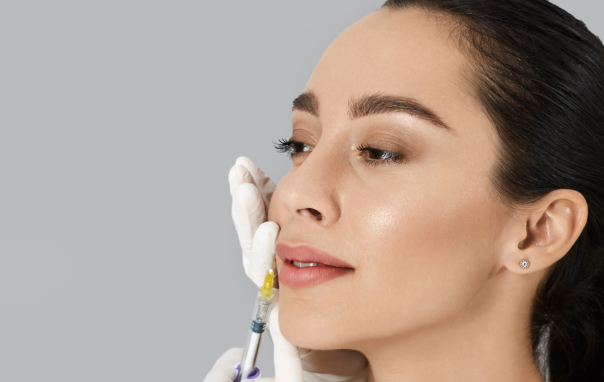
The Future of Botox
As Botox continues to evolve, ongoing research aims to develop new formulations and botulinum toxin types that offer even greater precision and longer-lasting results. Scientists are also exploring Botox’s potential in treating a broader range of medical conditions, including gastrointestinal disorders and other pain syndromes.
Additionally, Botox treatments are becoming increasingly accessible, with more clinics and plastic surgeons offering customized, Botox treatment plans for patients of all ages and skin types. For those considering Botox in Toronto, options are abundant, with many clinics offering consultations to discuss your goals and create a tailored treatment plan.
Conclusion: Botox Toronto – A Treatment for the Modern Age
The evolution of Botox has been nothing short of remarkable. From its beginnings as a treatment for medical conditions to its rise as a go-to solution for cosmetic purposes, Botox has transformed how we approach wrinkle reduction and muscle relaxation. Its ability to treat facial wrinkles and various health conditions has made Botox one of the most versatile treatments available today.
If you’re considering Botox in Toronto, it’s essential to consult with a qualified professional to ensure that you receive the safest and most effective treatment. Whether you’re looking to reduce the appearance of frown lines and smooth forehead wrinkles or address a medical condition like chronic migraines, Botox offers a solution combining the best cosmetic and medical treatments.
With a solid track record of safety and efficacy, Botox has established itself as a modern-day essential for anyone looking to maintain a youthful appearance or improve their quality of life through botulinum toxin injections. Ready to explore how Botox work for yourself? Contact Beauty Aesthetics, Toronto, to schedule a consultation and discover how Botox can work for you.



